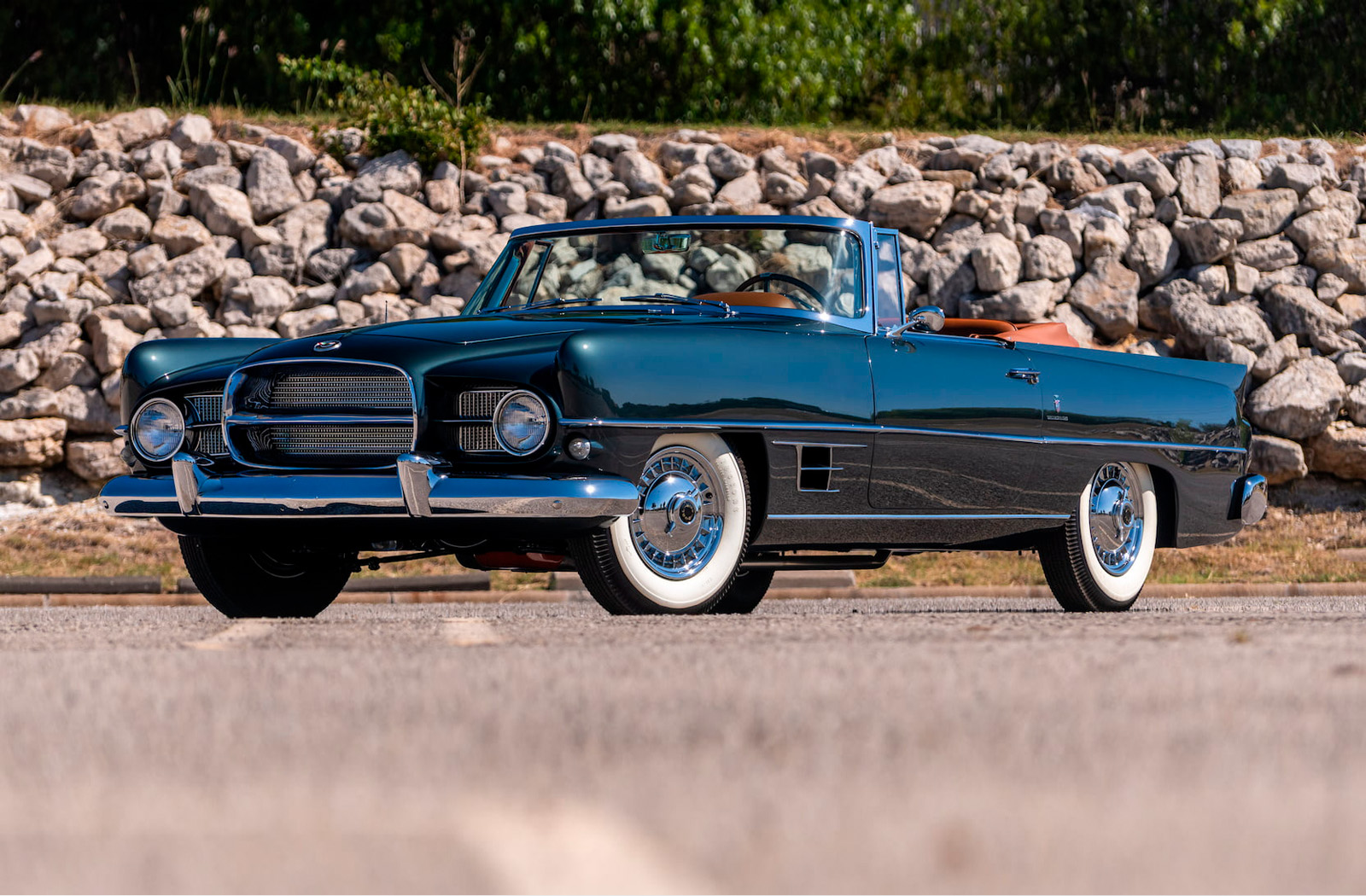During the second half of the 1950s, this rare coachbuilt masterpiece was the most sought-after vehicle by America’s elite. According to famed columnist Dorothy Mae Kilgallen, who often covered the rich and famous back then, owning a Rolls-Royce became a “status symbol for those who couldn’t get a Dual-Ghia.”
After being ravaged by the Second World War, the automotive industry was revived and pushed forward at an accelerated pace during the 1950s. In the US and over the Atlantic, carmakers were competing for supremacy, which led to many technical innovations and a different, more streamlined approach to exterior design. During that exciting decade, automotive icons like the original Chevrolet Corvette, Mercedes-Benz 300SL, Ford Thunderbird, and Jaguar XK150 were born.
But, for the vast majority of America’s rich and famous, those cars were just too mundane. Some drove American-built luxury rides like Continentals or Eldorado Biarritz Caddies, while others went for European rarities like Facel Vegas or Rolls Royces. Still, the cream of the crop preferred a car that came seemingly out of nowhere and shortly disappeared from the collective memory of car enthusiasts: the Dual-Ghia.
From concept car to series production

The story of the Dual-Ghia started in the early-1950s when Dodge unveiled a series of concept cars under the FirAarrow nameplate. Most of these vehicles were designed by the great Virgil Exner, with help from close-friend Luigi “Gigi” Segre, of Italian coachbuilder Carrozzeria Ghia S.p.A. Of these concepts, arguably the most eye-catching was the 1954 Firearow IV, a convertible that combined American power and reliability with gorgeous Italian styling.
The concept fascinated many wealthy enthusiasts of the era who campaigned for a production run. But when Dodge didn’t oblige, citing obscene production costs, one of those enthusiasts, Eugene “Gene” Casaroll, took matters into his own hands, purchased the rights for the design from the Chrysler Corporation, and decided to finance a limited production run.
Casaroll owned a Detroit-based shipping company that transported cars from the city’s biggest plants to dealerships nationwide. He also owned Dual-Motors, a company that built dual-engine tanks during WWII, so he had the money and the facility to assemble the car. The first stage of Casaroll’s pet project saw Ghia improve the FireArow IV’s design and create another concept car. Called FireBomb, the car was unveiled at the 1955 Geneva Motor Show.
A few months later, it was presented on American soil at the luxurious Grosse Pointe Yacht Club north of Detroit, Michigan, in front of a crowd packed full of celebrities who were overwhelmed by its beauty. As part of the deal between Casaroll and Chrysler, the car was presented as a Dodge concept to boost interest, but the limited-series production model that followed was called Dual-Ghia.
It traveled from the US to Italy and back before leaving the assembly line

The stunning convertible was based on a traditional frame sourced from Dodge. However, the structure had to be modified. The man overseeing this job was Italian-American Paul Farago, the Ghia representative in the US, and an established race car builder. After this process was completed, each frame traveled to Turin, where Ghia handbuilt the bodies and interior, often with subtle differences commissioned by future owners. Finally, each partially-completed car traveled back to Detroit, where the Dual-Motors crew fitted the drivetrains and painted each body, employing a complex procedure that included fifteen hand-rubbed clear coats.
Exquisite Italian styling combined with reliable American power

A mix of straight lines and subtly rounded shapes, the beautifully-sculptured, Ghia-built body was the car’s main attraction. Most of the design was carried over from the FireBomb concept, except for the rear tailfins, which were added at Casarol’s request. The interior also oozed luxury thanks to the abundance of premium materials and upscale features like power windows or air conditioning. The seats and dash were wrapped in fine Italian leather, while an aluminum plate surrounded the complete set of gauges. Some cars also received genuine wood trims complemented by chrome inserts. Under the hood, most Dual-Ghias hid either the standard or high-performance version of Dodge’s reliable, 315-ci (5.2 liters) Red Ram V8.
Though the standard dual-carb Red Ram featured polyspheric combustion chambers, the four-barrel carb high-performance version dibbed D500 had HEMI heads.In the D500 setup, the Red Ram pushed out 260 hp and 330 lb-ft (447 Nm) of torque. This was enough for a 0 to 60 mph (97 kph) sprint of around 8.5 seconds and a top speed of 120 mph (193 kph). From 1957 to the end of production, some cars were equipped with the newer, more powerful 361-ci (5.9 liters) Super Red Ram “B” engine. This big-block V8, rated at 320 hp, turned the Dual-Ghia into a veritable sports car.
